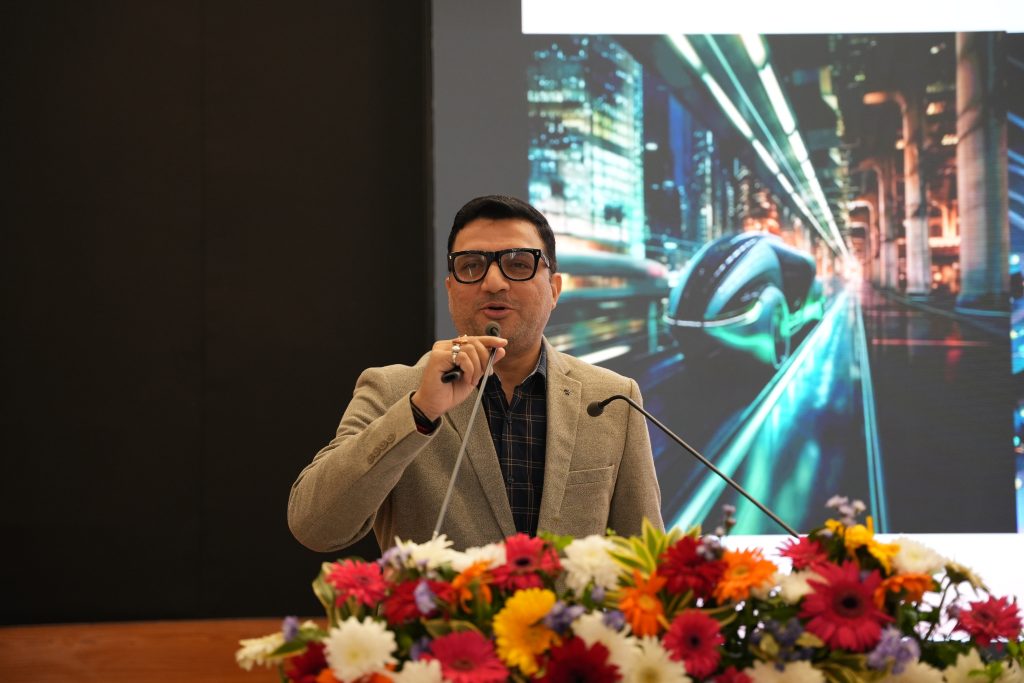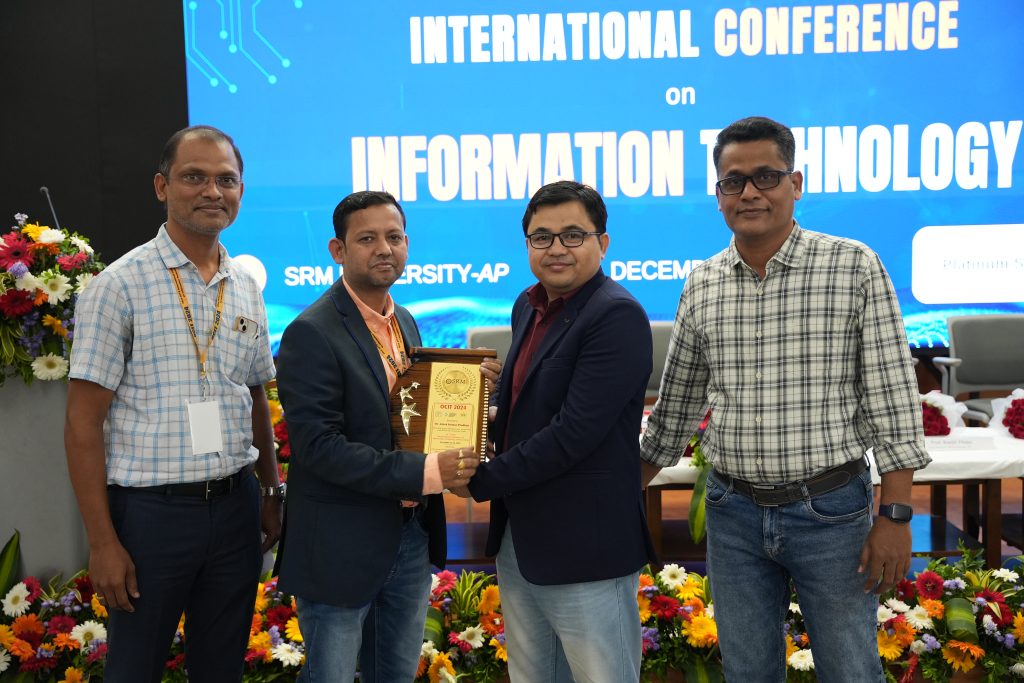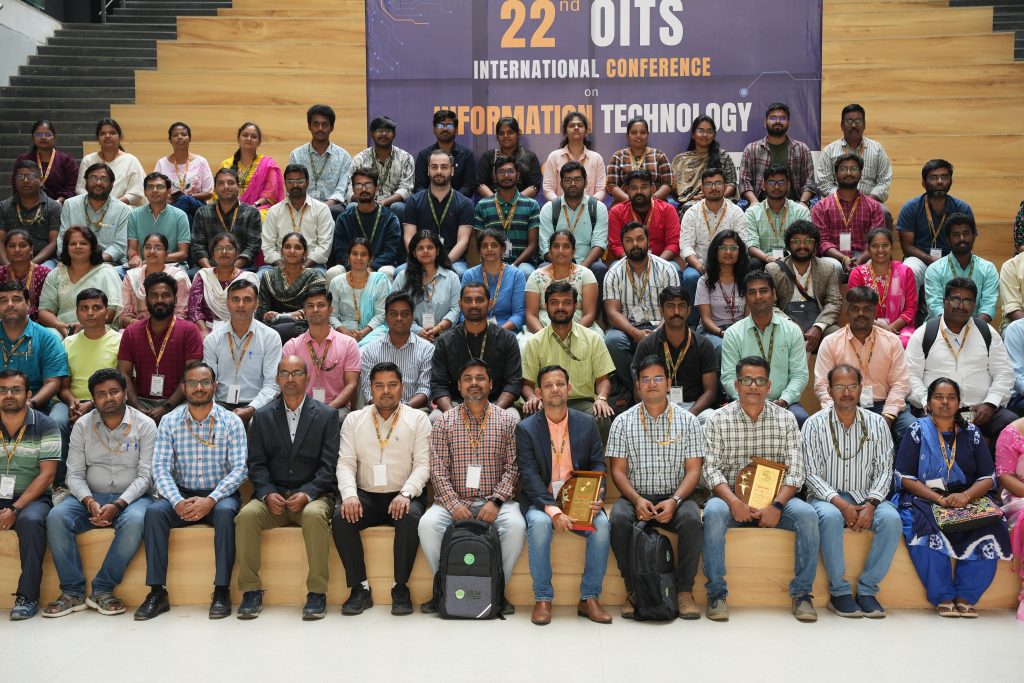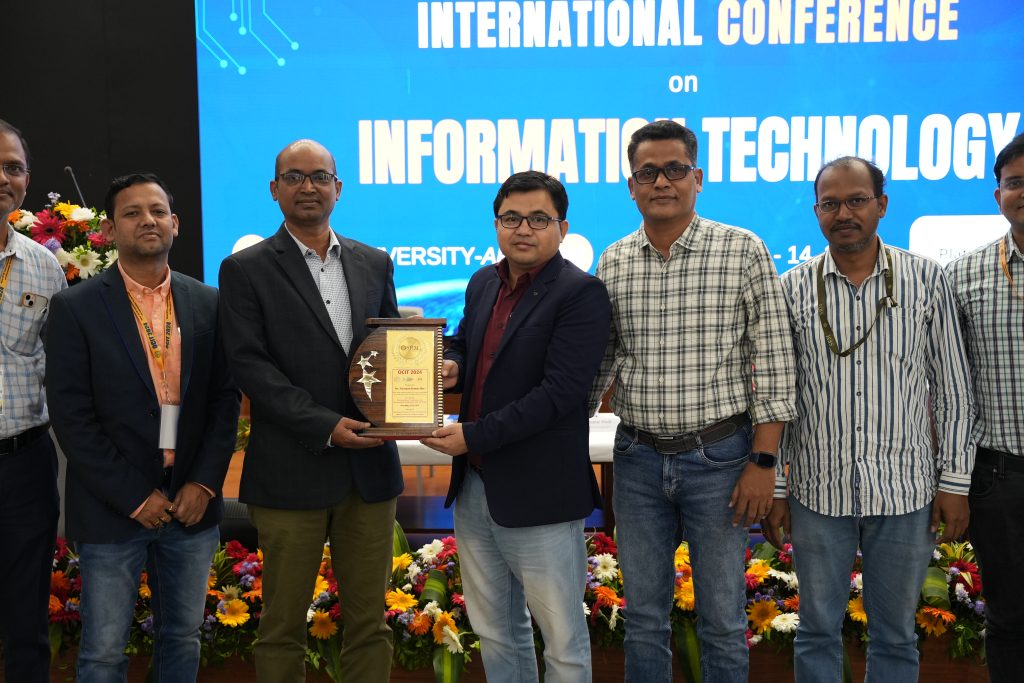Recent News
- OCIT-2024: An International Conference Exploring Trends in Information Technology December 31, 2024
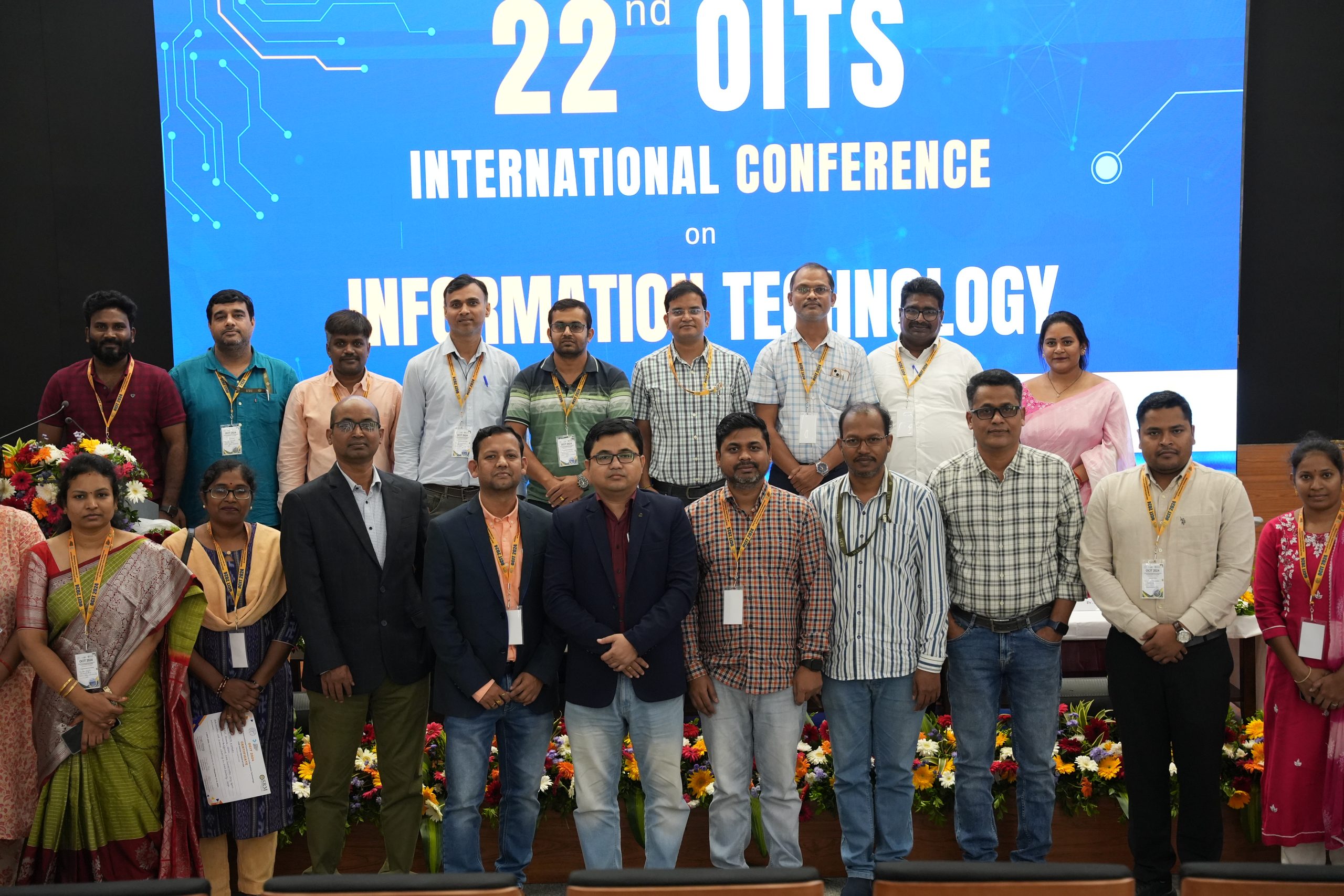
The 22nd OITS International Conference on Information Technology (OCIT-2024) was hosted at SRM University-AP from December 12 to 14, 2024. The conference, which served as a premier platform to discuss advancements in information technology, brought together distinguished academics, researchers, industry professionals, and students from across the globe. OCIT-2024 witnessed a submission of 600 research papers, out of which 136 papers were accepted and registered for presentation after rigorous review.
OCIT 2024 had seven keynote speakers who delivered insightful presentations, offering deep expertise and futuristic perspectives on emerging trends: Prof. Arun Kumar Pujari, HOD of AI & CSE, Adviser & Professor Emeritus Mahindra University, Prof. Banshidhar Majhi, Professor (HAG), Comp Sc.& Engg. NIT Rourkela, Former Director, IIITDM KP, Former VC, VSSUT Burla, Prof. Prabir Kumar Biswas, IIT Kharagpur, Prof. Sharad Sharma (University of North Texas UNT), Dr Kannan Srinathan (IIIT Hyderabad), Prof. Siba Kumar Udgata (University of Hyderabad), Dr Kumar Goutam (Founder & President of QRACE).
Esteemed session chairs guided thought-provoking discussions, elevating the intellectual rigour of the conference. Presenters also shared cutting-edge research, fostering a vibrant exchange of ideas and innovation. The topics explored ranged from artificial intelligence and machine learning to advanced networking and quantum computing. The conference emphasised the importance of collaboration between academia and industry in addressing global challenges and shaping the future.
The conference concluded on a high note, inspiring participants to continue their pursuit of excellence in research and innovation. 12 papers were recognised as the best papers for their exceptional quality and contribution. All 136 accepted papers will be published in IEEE Xplore (Scopus Indexed). Additionally, approximately 15% of the papers will receive extended invitations for submission to peer-reviewed journals.
OCIT-2024 was a remarkable event, leaving a lasting impact on its participants and setting the stage for future technological advancements. The event celebrated the spirit of innovation and research through well-curated presentations.
Continue reading → - Dr Gavaskar Publishes Patent on Generating Prompts December 26, 2024
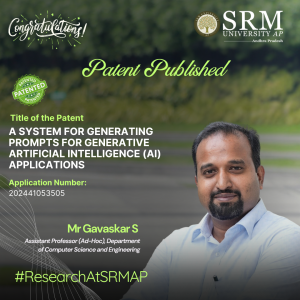
The Department of Computer Science and Engineering is proud to announce that Dr S Gavaskar has published his patent titled A System for Generating Prompts for Generative Artificial Intelligence (AI) Applications (Application Number: 202441091788). This groundbreaking invention will prove to be a significant advancement in the field of AI, enabling the creation of contextually rich and user-specific prompts, thereby enhancing the accuracy and usability of generative AI systems across various domains.
A Brief Abstract:
This research invention relates to Prompt creation process for Generative AI Application by introducing Four way corpus directory(FWCD) comprising the Persona corpus, Localized Application Specific Content Corpus, Annotator corpus, and Stopword corpus to create well-formed, contextual prompts for AI models. It also employs Semantic Based Categorization and Ranking(SBCR) for semantically categorizing and ranking the content present in the Localized Application Specific Content Corpus . The invention improves the interaction between users and Generative AI. It helps deliver more accurate, semantic based outputs from the AI models, improving the overall performance and usability of the system.
Explanation in Layperson’s Terms:
Prompt engineering is the process of using natural language to create instructions that generative artificial intelligence (AI) models can understand and interpret.In this research we have create a system for prompt creation by which the users can create their own prompt with the combination of their persona details,stopword,annotator content from their localized corpus directory before applying to the LLM models such as ChatGPT,Copilot etc.
Practical Implementation / Social Implications:
- This concept can be implemented in Education Institutions to generate tailored prompts for learning materials and academic projects.Enterprises can use localized content to generate role-specific prompts. and marketing organizations can use to create prompts aligned with specific campaigns or audience demographics.It can also be used in organizations where multiple persons with different roles and responsibilities are there and they have their own localized content for which a prompt has to be created for an Generative AI Application.
This invention also lets people from different skill levels access the system and create their own prompt for their applications.
Future Research Plans:
Future research focus is on creating LLM and AI related applications to the field related to education.cyber security,Legal and Enterprises.
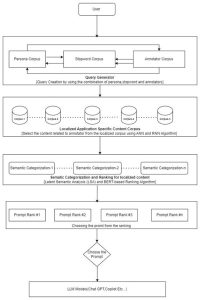
Continue reading → - This concept can be implemented in Education Institutions to generate tailored prompts for learning materials and academic projects.Enterprises can use localized content to generate role-specific prompts. and marketing organizations can use to create prompts aligned with specific campaigns or audience demographics.It can also be used in organizations where multiple persons with different roles and responsibilities are there and they have their own localized content for which a prompt has to be created for an Generative AI Application.


